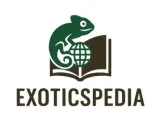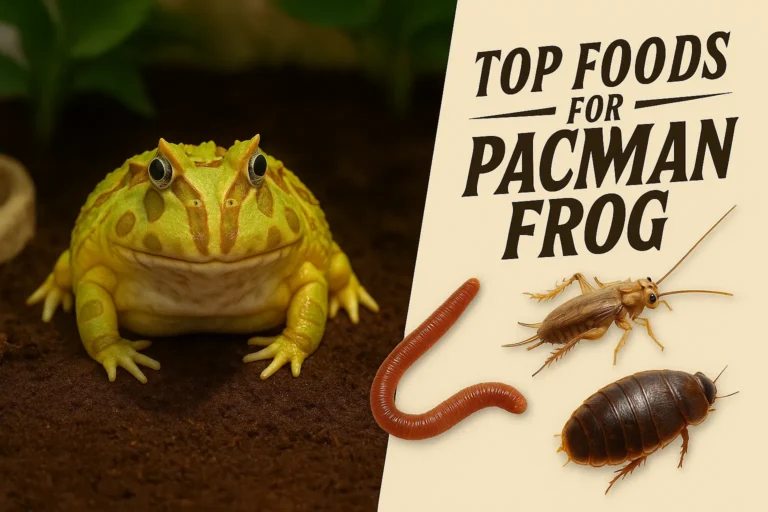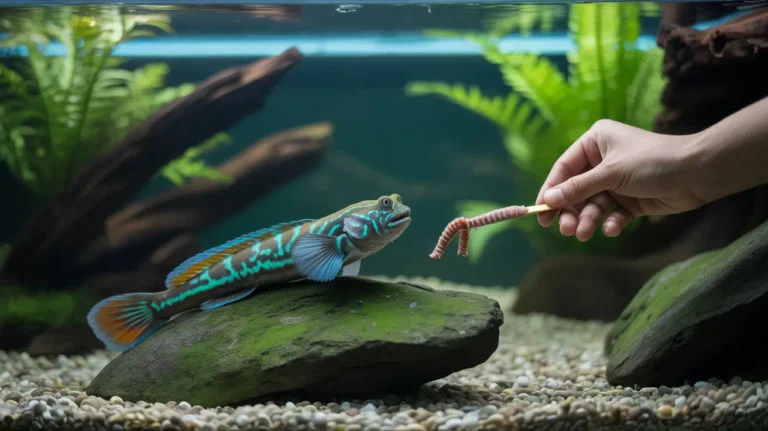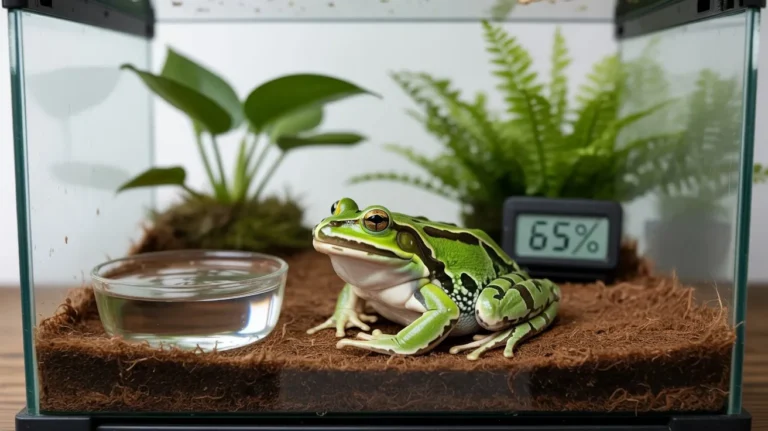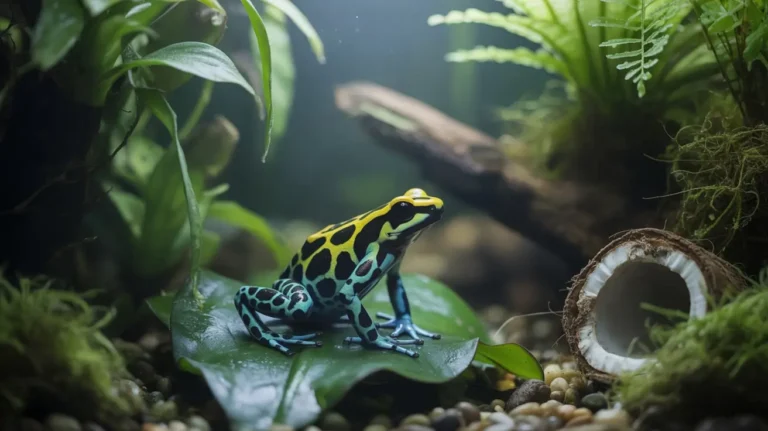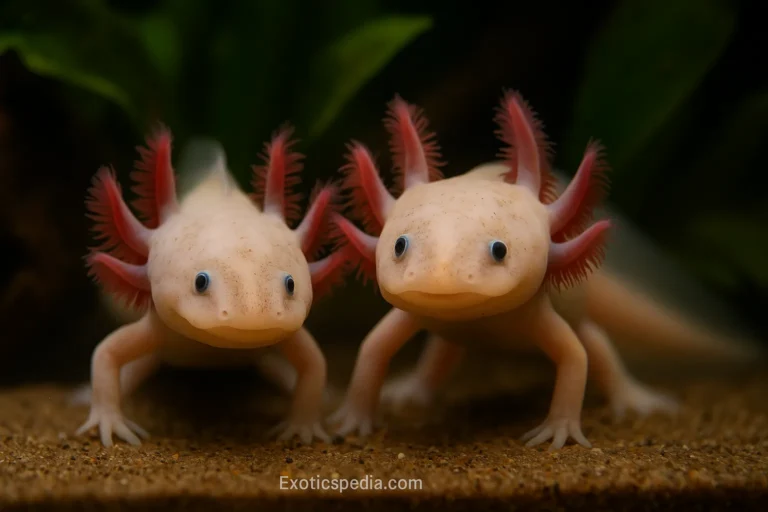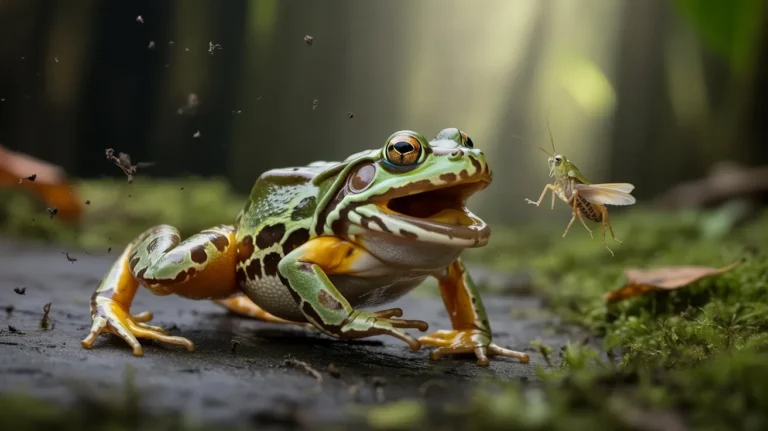Axolotl Facts: Care Diet Habitat & Lifespan
Axolotls are commonly known as “Mexican walking fish” although it is an amphibian that likes to spend its whole life under the water. The scientific name of Axolotl is Ambystoma mexicanum. This genus was named by Johann Jakob von Tschudi in 1839, but it didn’t clarify the reason related to the derivation of its name.
The main reason for the popularity of this creature is its distinctive appearance and unique ability to regenerate its body parts. The Axolotl was first discovered in Lake Xochimilco in Mexico in the 19th century by French explorers.
People desire to keep them as pets because of their unique appearance. Their small size makes them a cute pet. Axolotls require more care and maintenance than other aquatic animals.
These amphibians are small in size and they are found in different colors ( brown, blue, gray, etc.). Axolotls mostly like to be left alone but if you pet them they are quite friendly and social animals. They are fully aquatic so keeping them won’t allow you to directly interact with them although they are quite fascinating to watch.
| Common name | Axolotls |
| Nick name | Mexican walking fish |
| Scientific name | Ambystoma mexicanum |
| Type | Amphibian |
| Diet | Carnivore |
| Size | Up to 12 inches |
| Weight | 2 to 8 ounces |
Physical characteristics
Regrowing abilities
The most fascinating feature of an axolotl is its regenerative abilities which makes it unique from many other organisms. In the case of humans and many other organisms, they heal their scars by scar tissues, but cannot regenerate their lost body parts by any method.
When axolotls get wounded or lose their body part, they fully regenerate it without leaving any scars. This unique feature of axolotls makes them fascinating from a study and research point of view and their regenerative abilities are studied in many universities.
Capacity of regrowth
The ability of axolotls to regenerate their body parts not just once but multiple times makes them an interesting creature for scientific researchers. Research has shown that an axolotl can regrow its limbs up to 5 times without any scars. Axolotls can also regrow other body parts which are listed below
- Limbs: they can regrow the entire limb without any scarring, including bones.
- Spines: axolotls can actively regrow their spines with proper functionality.
- Heart: their ability to regenerate heart tissues is important for cardiac tissue repairing research.
- Lungs: axolotls can also repair lung tissues which is quite fascinating.
- Parts of the brain: they can also regenerate parts of their brain and put them in proper functioning.
Limb transplantation in axolotls
Another fascinating ability of an axolotl is limb transplantation. When an axolotl loses its limb, instead of regenerating its limb it can also accept the limb from another axolotl. Scientists attach the limb of another axolotl and the wounded axolotl accepts it without rejection.
Neoteny in axolotls
Neoteny is the case in which a creature keeps its larval and juvenile (childlike) features throughout its life. Instead of changing their features with the time, they keep the same young features for their whole life.
Axolotls and neoteny
Axolotls are a good example of neoteny. Unlike other salamanders they do not grow into an adult salamander. They keep their larval features and traits throughout their life such as they keep the gills and fin-like tail.
Characteristics they keep
- Growth: The effect of neoteny does not stop them from growing in size. Keeping their juvenile appearance they keep on growing in size.
- Reproduction: despite the fact that they do not go under metamorphosis, they still have their reproductive abilities and are able to breed. Neoteny does not affect their ability of breeding and reproducing.
An overview on its unique features
Adorable facial features
The axolotl is famous for its unique and adorable features. Its face is round with a large head and small eyes with a wide gap between them. It has a row of non growing teeth along with a charming smile that is always on its face. The smile enhances the cuteness on his face and makes Axolotl more attractive as pets.
The effect of neoteny plays a role in its young looking appearance which axolotl retains for his whole life. This cute appearance makes the axolotl popular among the people as a pet.
Other physical characteristics
Axolotls have several other fascinating physical characteristics which make them unique from other amphibians. They have gills which they use to breathe through the skin. These feathery gills extend from the sides of their head. Axolotls have an average length of 9 inches, in some scenarios they can reach the length of 18 inches.
After reaching their sexual maturity they get slight changes in their body such as male axolotls develop a cloaca and the tail grows visibly longer. On the other hand, in a female’s case, they get sexually mature and get the capacity to carry eggs. On average, a female axolotl can carry about 300 to 1,000 eggs at a time. Their bodies also start to look wider when they are carrying these eggs.
Physical characteristics
| Length | 9 – 18 inches (15cm-45cm) |
| Weight | 60g – 200g |
| Skin type | Permeable |
| Top speed | 10 mph |
| Amount of eggs female axolotl lays | 300 – 1000 |
Unique Colors of the Axolotl
Axolotls are commonly known for the variety of the colors they appear in, and this variety of colors plays an important part in their population. Wild axolotls are often found in tan or brown color mostly with gold speckles. This color provides them a benefit to camouflage in the wild.
Wild Type: The wild axolotls which are also known as the “wild” morph are mostly found in brown and dark gray colors. These wild axolotls often have brown or black speckling on their body. These colors are good for them to blend in with nature and hide from predators for their safety.
Leucistic: Leucistic axolotls have a very fascinating eye and body color combination. They are mostly pale pink or white with red or pink eyes. This color is more attractive and eye-catching as compared to the wild-type axolotls. There are no speckles on their body.
Albino: Albino axolotls have this unique creamy white skin and eyes are bright red. This color is mostly the result of selective breeding and lack of pigmentation.
Melanoid: Melanoid axolotls are completely black. Their color gives a matte look because they lack reflective iridescence which is seen in other morphs.
Golden Albino: Golden Albino axolotls have a yellow-golden shade with bright red eyes. They look like a combination of albino and golden coloration.
Copper: Copper axolotls have a reddish-brown color which looks like copper. This color is also a result of selective breeding.
Blue: Blue axolotls are very rare. They are also expensive because of their unique bluish-gray color. This color is also obtained through the process of selective breeding.
Habitat of Axolotl
In early times, axolotls were found in multiple lakes in Mexico. Most of them were found in Lake Xochimilco and Lake Chalco. With time due to urbanization and some drainage processes such as the drainage of Lake Chalco they are now only found in Lake Xochimilco of Mexico. This lake is in the southern part of Mexico City and now this is the only habitat of axolotl.
Nowadays, the number of axolotls found in the wild is very low. It ranges from around 700-1200 individuals. This massive decline is due to some factors such as habitat destruction, urbanization, pollution, and the introduction of some new species.
Axolotls are permanently aquatic and never come on land, unlike most amphibians. They live in cool and fresh water and the suitable water temperature for them is 60-65 degrees Fahrenheit (15-18 degrees Celsius). They breathe in water through their external gills.
Apart from their reduced population in the wild, they are also found in captivity. They are commonly used as pets because of their unique appearance and they don’t need much maintenance. They are also bred in zoos, and laboratories and widely studied in universities because of their unique characteristics.
Average age
The average age of an axolotl is 10 to 15 years in captivity. With good conditions and extraordinary care they can live up to 20 years almost. They live shorter in the wild and their age is around 5 to 6 years in the wild. Their lifespan in the wild is shorter due to factors such as predators, pollution and environmental challenges.
Axolotl Breeding and Care for Hatchlings
Breeding season
- Breeding period: During March and June the water temperature rises and gets warm, and they breed during this period.
- Egg laying: The female axolotl lays eggs on different aquatic plants or surfaces within the tank. It can lay around 300 to 1,000 eggs at once. Fear axolotl does not lay all the eggs at once rather it deposits them individually.
- Incubation: Female axolotl hatch eggs within 2 weeks. The most suitable temperature of water for hatching is 75 degrees Fahrenheit (24 degrees Celsius).
Care for hatchlings
- Parental care: Axolotls do not provide parental care to their newborns and they may also consume their eggs. Pet owners must take care of axolotl eggs and larvae from the adults.
Special care needs
- Tank setup: newborn axolotls must be kept in a separate and maintained tank to prevent them from being eaten by the adults. The water in the tank must be changed regularly for better growth.
- Feeding: small and appropriate food like crushed pallets should be fed to them at first. As they grow up, you can make them eat live food such as bloodworms and shrimp.
- Water maintenance: Make sure to keep the water clean by regularly changing it. Water must be monitored to make sure that the axolotl is living in a clean environment.
Axolotl Diet: What to Feed Your Pet Axolotl
Axolotls are carnivores and they need that diet accordingly. In the wild, their diet mostly includes small fish, worms, insects, insect larvae, and mollusks. A rich diet will benefit your pet axolotl to keep it healthy.
Best Food Options for Axolotls
Live Food: If you cannot find any commercial food for your axolotl, live food is a good alternative. And in my opinion, it is also better than commercial food. However, make sure that the live food you give to your axolotl does not harm it. Some creatures might bite your axolotl which can cause skin infection or irritation to your axolotl. You should use safe options like earthworms, bloodworms, and shrimps.
Commercial Diets:
The nutritional needs of your axolotl can be fulfilled by the formulated commercial diets ( processed food ). These diets are a good option to meet all the nutritional needs of your pet for his healthy growth.
Feeding Tips for Axolotls
- Multiple Small Meals: Several small meals throughout the day are better for your axolotl rather than one large meal only once a day. Feeding them small multiple diets every day is better for their digestive system and it relates to their natural eating habitat.
- Consistency is Key: Daily, feed your axolotl at the same time consistently. Try to put the meal in the same spot in the tank. This routine will help to reduce stress and encourage regular feed behavior.
By following these guidelines, you can ensure your axolotl stays healthy and happy, enjoying a well-balanced diet that meets all its nutritional needs.
Additional Resources
